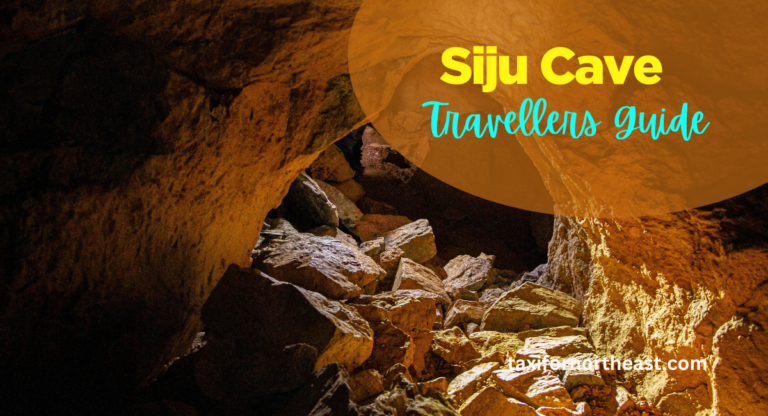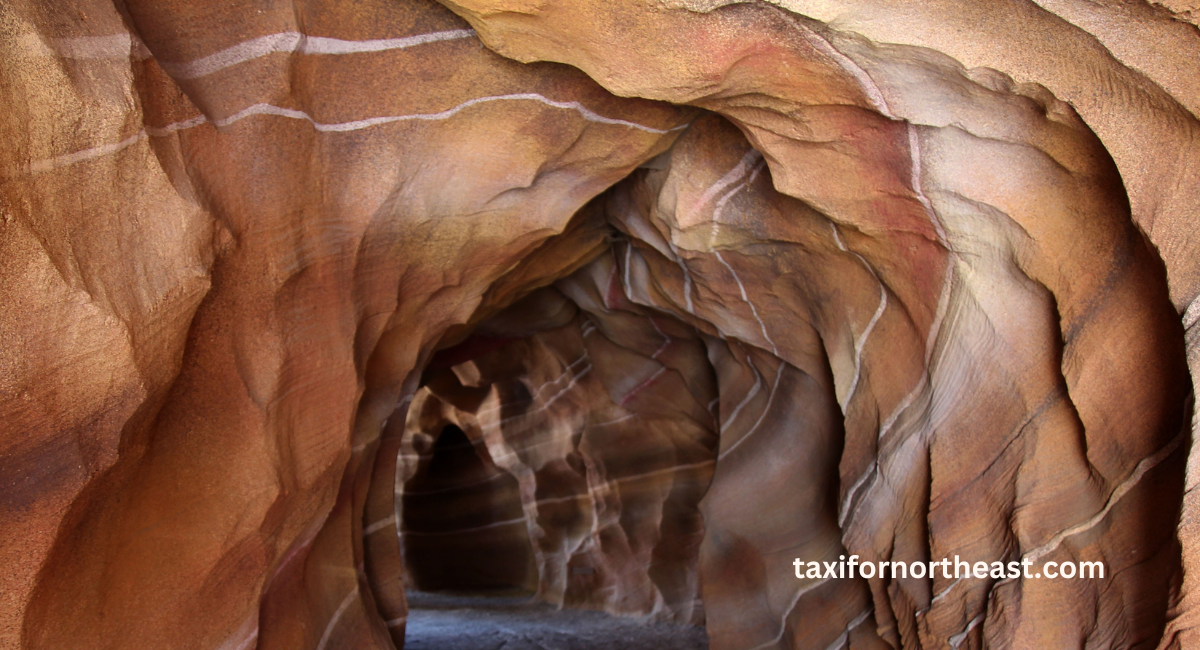9862386582 • 7308746608

Siju Cave Meghalaya: The Ultimate Traveler’s Guide 2025
Have you ever dreamed of stepping into a landscape that feels like it belongs to another planet? Where sunlight gives way to mysterious shadows, and every turn reveals a world untouched by ordinary experience? Dear intrepid traveller, we are talking about Siju Cave in Meghalaya (Siju Dobakkol) located in the heart of Meghalaya’s lush Garo Hills.
We will unlock the secrets of Siju Cave that will transform your understanding of natural beauty.
Are you ready to dive into a world where geology meets magic, and every moment promises an unforgettable experience?
If you want to travel with us, then let us get started.
History of Siju Cave
The story of Siju Cave begins millions of years ago, during the Eocene period, about 50-55 million years ago. This was a time of great geological change in the Meghalaya region, with large tectonic movements and limestone depositions.
The Garo Hills, where Siju Cave is located, were once part of a vast marine ecosystem, with calcium-rich sediments gradually accumulating and forming the foundation for these remarkable limestone caves. In the middle of the 20th century, Siju Cave became prominent among researchers because of its exceptional bat population and unique ecosystem. Researchers began conducting extensive studies of the cave to understand how it supports diverse wildlife. Since the 1980s, more advanced geological and biological surveys have shed light on the complex history of the cave.
Carbon dating, geological mapping, and other advanced techniques have been employed to understand the cave’s formation, age, and ecological evolution.
Where is Siju cave located?
Siju Cave is a geological treasure strategically located in the South Garo Hills district, specifically near the small village of Siju, between Nongalbibra and Baghmara.
Here’s a concise travel time breakdown and key distances.
- Baghmara to Siju Cave: Scenic drive of 33 kilometres passing through the picturesque Garo Hills, usually about 1 hour by road. Breathtaking scenery over the lush landscapes of Meghalaya.
- Shillong to Siju Cave: Adventure over 250 kilometers through approximately 6-7 hours, passing through gullies and verdant land on winding mountain roads and is a true immersion into travel experience in Meghalaya’s varied geography.
- Guwahati Airport to Siju Cave: A 194-kilometer journey, approximately 5-6 hours, which connects the busy urban city of Guwahati to the wilderness of Siju Cave, representing the dramatic change in landscape in Meghalaya.
- Umroi Shillong Airport to Siju Cave: A 275-kilometer journey which will take around 7-8 hours to cover, passing through various districts and providing the tourist with a panoramic view of Meghalaya’s scintillating natural beauty.
- Guwahati Railway Station to Siju Cave: 209 Km. It takes around 5-6 hours. Connecting the major transportation hub to this hidden geological marvel in the heart of Garo Hills.
- Williamnagar to Siju Cave: 57 Km. It will take around 1.5-2 hours. It is an easily accessible and exciting route for explorers eager to discover the underground wonders of Siju Cave.
How to reach Siju caves?
An adventure of reaching Siju cave involves accessibility combined with raw beauty in the landscape of Meghalaya. The cave may look really distant; yet, it is well-connected to adventurous travellers.
Strategically, it is placed just 5 kilometers from Duramong Siju bazaar, running parallel to the main road. What makes this place extra traveller-friendly is that you can almost drive right up to the cave entrance – the road is motorable right up to just 50 meters from the cave’s mouth. Thus, even the travellers who have a problem moving can relatively easily access this wonder of geology.
Also read: Explore Wari Chora in Meghalaya
Bonus Attraction Nearby
Just 150 meters from the entrance of the cave, you will find the famous Dabat wari beautifully nestled along the Simsang river. Proximity to this place will provide travellers with a double attraction: the mystical underground world of Siju Cave and the serene riverside landscape, thus providing an all-round experience of the natural diversity of Meghalaya.

Why Siju cave is famous for
Siju Dobakkol, commonly known as Siju Cave, is famous for several extraordinary features that make it a geological treasure. The cave is renowned for its spectacular limestone formations, creating an underground landscape that resembles a natural cathedral. It’s famously nicknamed the “Bat Cave” due to hosting one of the largest bat populations in the region. Thousands of bats inhabit this cave, forming a unique ecosystem of wonder to wildlife enthusiasts and researchers. The cave is also home to multiple species of bats and thus an important location for ecological research.
Rock layers in the cave form part of the geological history of the region, carrying stories of millions of years in its layers. Besides the bats, the cave forms a microecosystem with diverse life.
It is also a marvel of geology and also a biological wonder, home to rare cave-dwelling organisms, unique fungi, and specialized insects. And for local Garo communities, the cave holds cultural importance for not just a geological formation but a space that is deeply intertwined with local folklore, traditional stories, and spiritual beliefs.
Interesting activities around Siju Cave, Meghalaya
Cave Exploration: There is a guided tour through Siju Cave, including narrow passages, stalactites, and stalagmites. The main cave features some of the most breath-taking limestone formations, so it is ideal for adventure enthusiasts and photographers.
Spelunking: The more adventurous spelunking allows going deeper into the cave’s more secret chambers. It entails crawling through narrow passages to discover parts of the cave that are not as frequented, giving an additional thrill to the adventure.
Bat Observation: Siju Cave accommodates a strong population of bats. Their sheer presence does provide a perfect wildlife view experience. Visitors find it enjoyable to watch and observe such a fascinating world of bat roost.
Trekking: Beautiful trekking trails leading to the cave are available within the surrounding Garo Hills. The hike through lush forests gives you a great opportunity to appreciate the area’s natural beauty while moving toward one of the most famous natural wonders in the region.
Visit Siju Wildlife Sanctuary: Located nearby, the Siju Wildlife Sanctuary offers a great opportunity to spot local wildlife, including birds, elephants, and other animals. The sanctuary’s scenic beauty and diverse flora and fauna make it perfect for nature walks and photography.
River Activities: The cave area is near the Simsang River, where you can enjoy peaceful moments by the water or indulge in activities like boating or fishing.
Photography: With limestone formations of beauty, a great diversity of wildlife, and serenity in the landscapes, Siju Cave is one of the perfect spots for photography, both nature’s beauty and the beauty of the cave.
Credits to OffbeatandUntold YouTube Channel
Final words
There is no doubt that Siju Cave is one of the hidden jewels of Meghalaya, promising a perfect mix of adventure, natural beauty, and wildlife. Along with the beautiful surroundings, Siju Wildlife Sanctuary nearby and the calm Simsang River add beauty to this place, and hence a visit here would be great for nature lovers and adventurers.
If you are visiting Meghalaya and want to visit Siju Cave, all you have to do is navigate to Taxi for Northeast and find your package tour for this wonderful destination.
We would coordinate the best transport, prepare the tours, and have reservations for your stay as seamless and memorable as our trip is.
Call now, and let’s work it out for your ideal package to Meghalaya together with a visit to the Siju Cave.